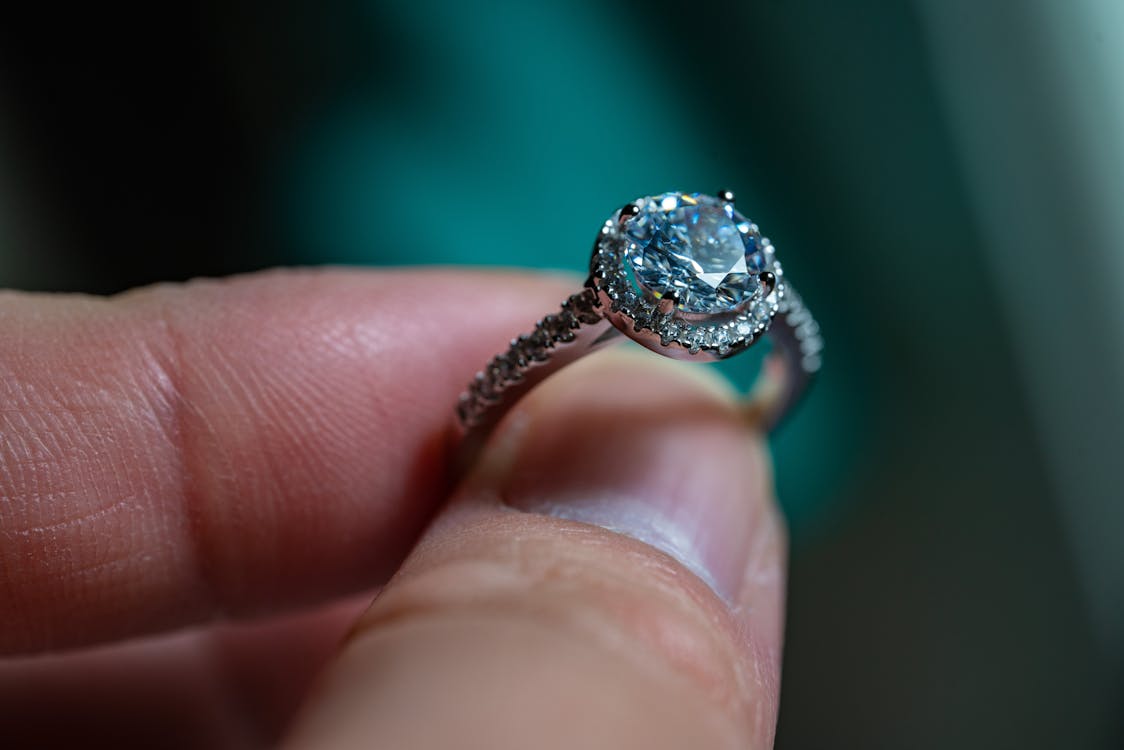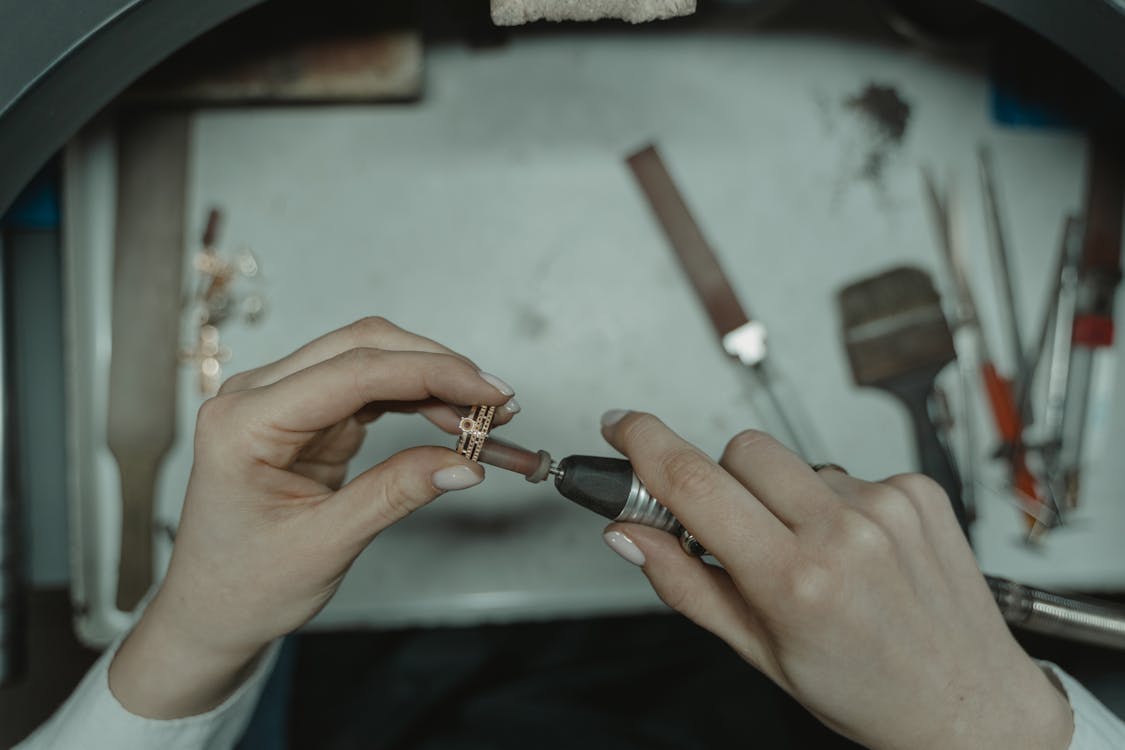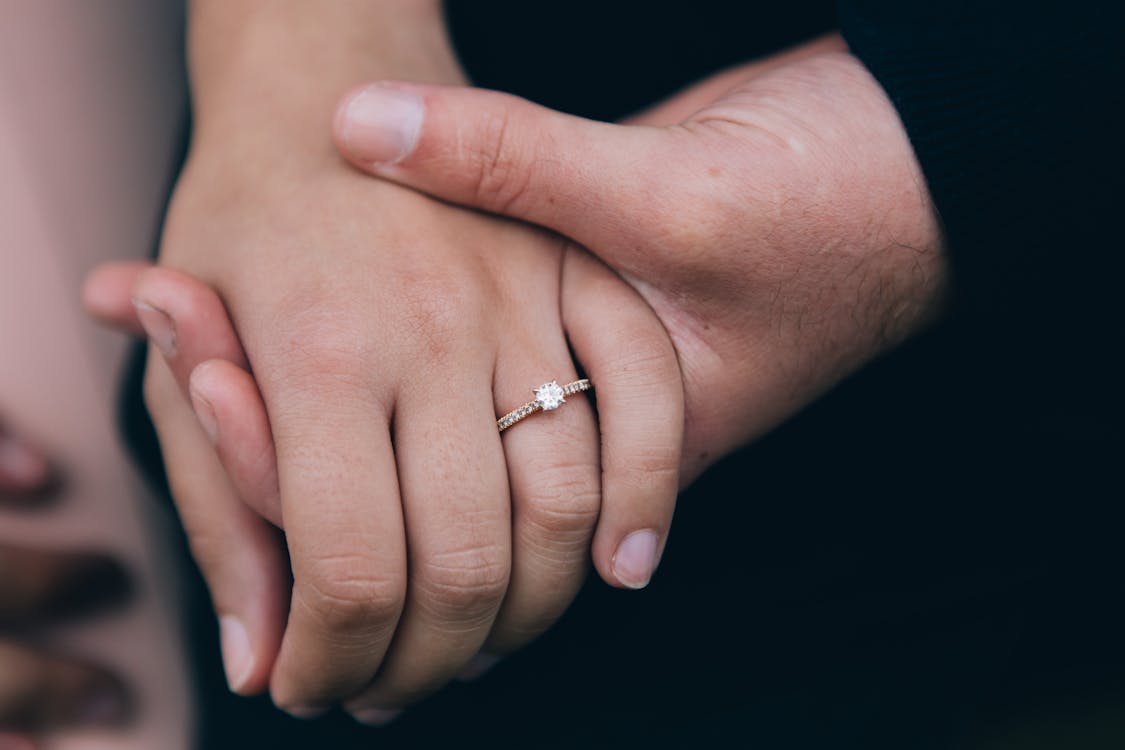If you have arrived at this article, then the chances are that congratulations are due because it means that you have been proposed to, so... congratulations!
Agreeing to commit to a partner for the rest of your life is a huge life moment, and traditionally, it comes with a stunning piece of fine jewelry in the form of a diamond engagement ring that will have been purchased by your new fiancé from a jeweler.
Many people prefer to keep their proposal plans a secret, and as a result, ring size and ring fit can sometimes cause an issue after the fact. If your significant other has not been able to do as much homework and research on your ring finger as they would have liked to, it might be the case that it isn’t quite the correct size.
There’s no need to worry. There’s an amazing number of engagement rings that are not the right finger size when first purchased. One of the most common services provided by a professional jeweler after the retailing of jewelry is resizing engagement rings and wedding bands.
The perfect engagement ring deserves the perfect fit, so do not hesitate to take your new ring to the jewelry store where it was purchased if you need any adjustments to be made.
This is arguably the most precious piece of metal you will ever own, so it is worth the effort to make sure that the ring’s band is customized to your measurements. Some stores will offer free resizing in the price and others will cover the ring with a warranty. Whether or not you need a bigger size or a smaller size, you should never be anxious about enquiring.
Here are some of the main considerations of engagement ring resizing to bear in mind when deciding whether or not you need yours adjusting.
What Type Of Rings Can Be Resized?

For a wedding ring or engagement ring to be resized, it has to be made from a precious metal that a jeweler can easily work with - i.e. sterling silver, yellow gold, white gold, and platinum. There needs to be enough room on the ring for the resizing to be done.
Rose gold rings are not usually able to be resized because the gold can crack during the process and when sizing upwards, it is difficult to find a perfect match because rose gold is an alloy.
Most styles of silver and gold rings can be resized except if your ring is a full eternity band or is a style where tension is the mechanism for holding the center stone in place. Any ring style that has stones set in it all the way around has no bare metal for the jeweler to work with. Resizing a tension set ring can alter the tensile strength, causing a misalignment in the central gemstone.
If you have an intricate or unusual style of ring, your jeweler will advise if it can be resized or not.
There are some materials used in modern rings that cannot be resized. For the metals, tungsten cannot be resized because it is too hard to work with and some jewelers avoid resizing things like rhodium and titanium because they can also be more difficult to handle and work with. Other materials include plated metals, ceramic, wood, and copper.
If your ring is unable to be resized, then a good tip is to wear another ring that can help you to keep the loose band in place. Other than that, the only other option, if your engagement ring is just too large, is to take it to a jeweler to remake it in the correct size.
How Should A Ring Fit?

Your engagement ring and wedding band should fit snuggly but comfortably on the finger. It should be able to slide easily up and down but should also have to be pulled slightly over the knuckle to remove it. If the ring feels uncomfortably tight it needs to be made larger and if it keeps slipping or twisting around without any resistance, it needs to be made smaller.
If your ring is only slightly too big or the ring slides around your finger from side to side so the center stone never sits plum in the middle of your finger, the problem can usually be fixed by placing a sizing assistant in the ring to help it stay in place. These take away the need for resizing.
The three options are
- Sizing Bar - A u-shaped bar is soldered across the inside bottom part of the ring. It features a latch and hinge mechanism which you open and close to put on the ring and hold it in place.
- Spring Insert - The inside of the ring is fitted with a small, horseshoe-shaped band that opens and closes to enable the ring to slip past your knuckle and have a snug fit.
- Sizing Beads - Small metal beads are soldered to the inside band to create a closer fit.
In general, rings can be decreased or increased by up to two full sizes, but a half size is usually the preferred range for a jeweler, particularly for enlarging. Anything larger than two sizes can put too much stress on the ring.
If you have to wait for your ring resizing appointment, then your jeweler can give you a temporary ring guard to wear to make it fit more snuggly in the meantime. It is a bar that clips across the bottom of the ring that is designed to be used for a short amount of time. Over time, a ring guard can damage the band so it should not be relied on as a long-term solution to an ill-fitting ring.
To Make A Ring Smaller

To reduce a ring’s size, a jeweler will cut out a piece of the existing band and then form it back into a perfect circle by soldering it back together. The ring will then be cleaned and polished and when finished, there will be no evidence that the ring has been cut and altered. It will look the same but will just fit much more snuggly on your finger. The simpler the band, the easier it is to make the seamless changes.
To Make A Ring Bigger
It is more complicated to increase the size of a ring than to make it smaller. The job involves the jeweler stretching out the metal and an extra half-size can be achieved in this way. If anything larger than that is needed, then the jeweler will need to cut the band and add a small piece of metal which they will solder, clean and polish to try to achieve a seamless insert.
Again, the more simple your band, the more simple the job will be. For example, if your ring has channel settings, it might be necessary to move the gemstones around during the resizing process, because you don’t want to end up with a loose diamond, especially if it is a large-carat solitaire.
How Much Does It Cost to Resize a Ring?

The resizing cost depends on various factors:
- type of metal
- quantity of metal
- number of sizes it needs to be moved up or down
- number of changes to the ring’s design including any stone adjustments.
Sizing a ring downwards is cheaper than increasing the size and thicker rings will cost most than thinner rings,
Costs start as low as $20 and can go as high as $150.
Does Your ring Need Resizing?
Unless it is so very obvious, you should wear your new ring for a few days to determine its fit. The width of your finger fluctuates throughout the day and also in different seasons. It will feel looser in the cooler seasons and more snug in the summer and when you’re working out. Your ring finger size may also fluctuate considerably during pregnancy.
A ring sizer will also help determine fit but a consultation with a jeweler with experience in resizing will elicit the best advice.







